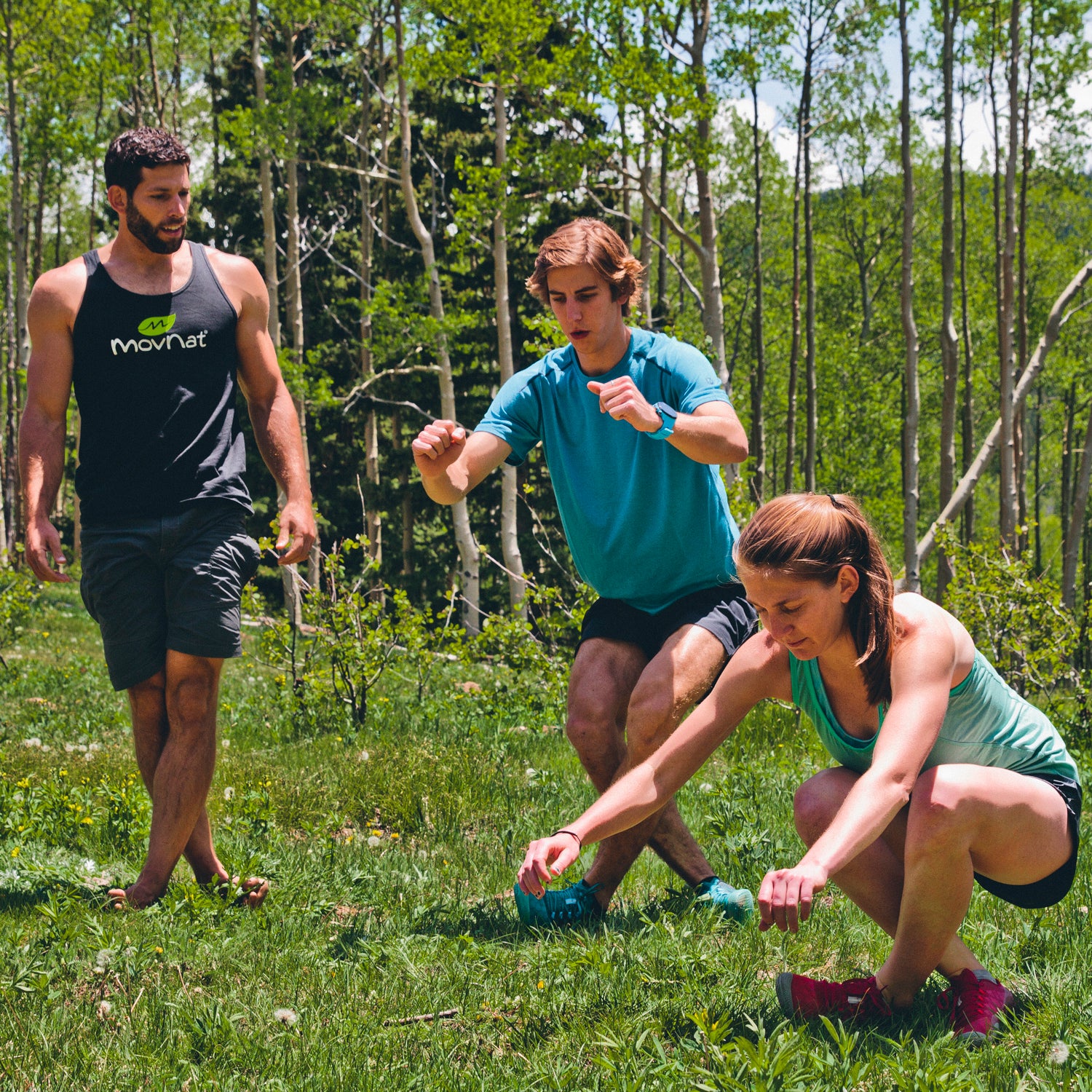Let’s try something: Lay flat on the ground and attempt to stand up without using your hands. Sounds simple, right? It’s not. You’ll likely feel some straining in your back and core, your hips will hurt as you push them out wide, and you’ll wobble as you try to find the right positioning for your legs. Should you finally get into a good stance, your quads will burn as you stand up.
This movement is difficult in part because few of us spend a whole lot of time on the ground outside. Our world has been elevated via chairs, raised beds, and desks. We no longer need to be strong and stable on our hands and knees, or even while lying on our stomach or back. It’s no small issue. As a species, we evolved performing these types of tasks while navigating natural environments, climbing, and traversing. According to trainer Danny Clark, the strength that these ground-based actions develop translates to nearly every other facet of motion and performance.
“Ground movement is our foundation—our stability, flexibility, and strength all stem from our capacity to move on the ground,” says Clark. “Even from a developmental perspective, our ability to move and explore our world all starts from ground movement.”
Clark is the performance director at , a company started in 2008 by French that focuses on developing exercises and fitness systems based on the full range of natural human movements. One of the company’s foundational practices is ground movement. Clark sees it as the most essential building block in becoming a dynamic, healthy athlete. “Our ability to do elite, high-level tasks depends on our ability to do ground movement,” he says. “Envision a tree. Our roots are ground-level movements, and then higher-level movements are linked to these movements.”
In this sense, ground movement, while not necessarily resembling anything else you’ve done in a gym, can build the strength, mobility, and balance necessary to be a better, injury-free climber, runner, hiker, or rider.
Ground movement encompasses thousands of motions and exercises. “The biggest thing with ground movement is that it works on core stability, which is different than strength,” says Clark. “Strength is managing a load, whereas stability is more about having control over your entire body, or having the coordination to do something efficiently.” On the mountain, this could translate to more streamlined and effective performance.
Rolling, crawling, squatting, and standing can be awkward and messy, and in that sense, there’s no perfect way to execute ground movement. “We don’t define movements but instead create a framework,” says Clark, who studied physical therapy and exercise science and joined the company in 2014 to bring a more peer-reviewed approach to the poetry of MovNat. “Can you roll over and come to a prone position? Then can you get to seated position? Can you get up from there? In each position, we talk about how to improve technique, and then add a little motion.” And technique, Clark stresses, is different than form. “Form is when you look at someone and it seems to look right, but there is no one right way here.”


